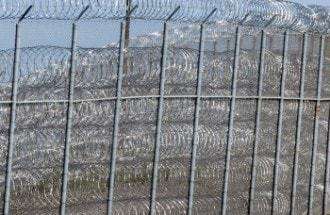Technology Could Prove As Important As Legislation
Eric Easte
Better use of technology and data could help solve the problem of mass incarceration.
That’s one conclusion that can be drawn from the work of Steven Matthews, a technology consultant who, until recently, was Chief Information Officer for the Illinois Department of Corrections. During his tenure, relatively simple changes in both technology and how data are collected resulted in both shorter sentences and significant taxpayer savings.
According to Matthews, which information is kept, tracked, shared, analyzed and acted upon, may prove a faster and more effective route to actual changes than the raft of proposed criminal-reform legislation.
“Lack of efficient tracking and outdated technology is at the root of a host of mistakes and errors that can result in prisoners being un-served, under-served, misplaced, misdiagnosed, undiagnosed and thrust into unnecessarily long sentences. Those things should be tracked and be factored into the length of the sentence, especially for non-violent, first-time offenders. The reduction in costs could be dramatic,” said Matthews.
In contrast, Offender 360, a new software and tracking system that Matthews and the Illinois system installed, has curbed the prison population by 10 percent over two years, according to the Illinois Bureau of Prisons.
The secret? Tracking a seemingly minor detail — which prisoners get awarded good conduct credits for GED education, something that never was recorded adequately. With tracking in place, 2,303 prisoners have received 314,634 new days-off credits since 2013. Based on the estimated imprisonment cost of inmates who stayed, these early releases saved the state approximately $11 million and returned people to their families and communities sooner.
While these statistics appear dramatic, in release days, the program’s broader impact is cumulative. For the average inmate, the numbers are far less impressive. Actual release times may come a few days, or less often, a few weeks earlier. “For a person confined, a release even of just a few days [sooner] matters,” Matthews said.
Still, prison experts stress that early releases gained this way address only one small part of the need for broad reform. While state taxpayers may benefit in raw numbers from such technological innovations, barriers to success for the newly-released — scarce job opportunities, lack of education, few effective transition programs — remain high.
According to Matthews, most state prison systems collect these data, but rarely use them, and often lack the resources — or political will — to analyze them.
Matthews cites problems throughout many states that have not updated technology or tracking systems in years. “There are drug addicted people… and hardcore drug dealers in the same programs, often because they are all classified simply as ‘drug offenders,” Matthews said.
A. Scott Bolden, a prominent Washington D.C. defense attorney and former New York prosecutor, echoed these sentiments. “There simply is no incentive on the part of the prison industry to ensure accuracy of data, and more important, the accuracy of the data is only as good as the people who put it in and analyze it,” Bolden said.
“As both a prosecutor and a defense attorney,” said Bolden, “I’ve often found that it is the inmates who can calculate their time better than the judges, the prosecutors or the prison system. It can get pretty complicated, and it’s the inmate who has the vested interest in that. But aside from them, there is no one out there advocating for the correct use of tracking or data on their behalf.”
While much of the focus on justice reform has been on prisons and prisoners, Matthews also sees this technology and tracking as tools to be used well before people enter the system.
“When a judge sentences someone to three years, for example, neither that judge nor anyone else knows if there are beds available, or occupancy levels, or what services will be available during the time served,” said Matthews. “So someone may be sent to prison for one period and be in need of services, but those services may not be available until most of that sentence is served. So how does that really help?”
“The bottom line is that thousands of people are staying in prisons much longer than they should and not getting the services they need because of a lack of transparency and accountability.”
—
-30-

